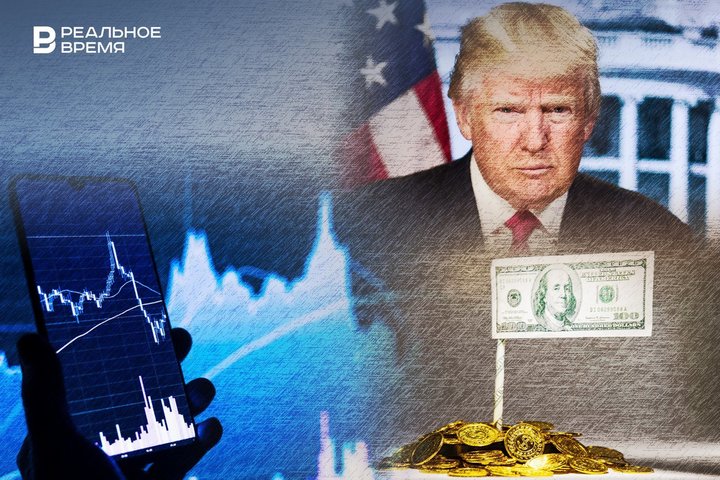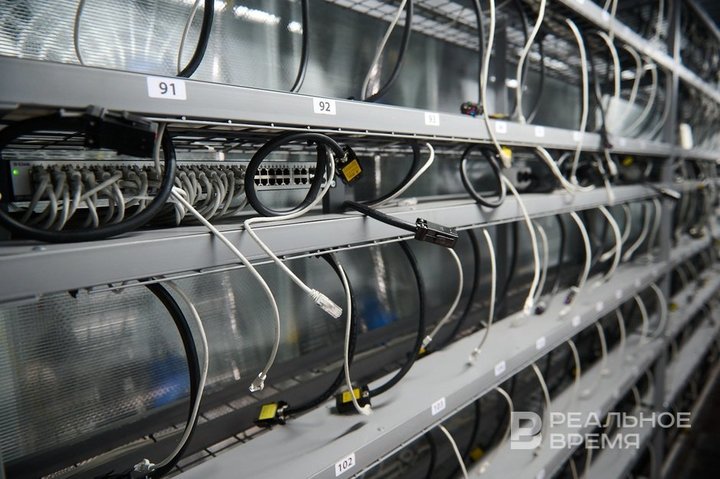Dollar 2.0: why Trump rejects the Federal Reserve’s digital dollar and bets on stablecoin
Behind declarations of freedom, there’s a struggle to maintain the US monetary dominance

The Bank for International Settlements, which is called the “bank of central banks,” has criticized stablecoins, saying that they cannot become the basis of the future monetary system. Meanwhile, the US president is actively promoting these digital assets, although he previously spoke out sharply against the introduction of a digital dollar. In his opinion, this would give the government “absolute control” over Americans’ money. Digital economist Ravil Akhtyamov explains why the American leader is betting on cryptocurrencies tied to another currency or asset class in an op-ed column for Realnoe Vremya.
Rhetoric and systemic calculation
Donald Trump’s position against the creation of the Federal Reserve’s digital dollar (CBDC, the central bank digital currency) is often perceived as a populist gesture. But the analysis reveals a more complex motivation, one that is rooted in protecting the dollar system’s core strengths. His categorical rejection of the idea of a Federal Reserve digital dollar (CBDC) while actively supporting private stablecoins is an attempt to adapt the United States’ centuries-old monetary dominance to the realities of the digital age, while avoiding the risks inherent in state digitalization. Paradoxically, private instruments are becoming the key to maintaining the dollar’s state hegemony.

When Trump calls CBDCs “an instrument of total control,” he is appealing to traditional American values. However, underneath this rhetoric lies a pragmatic defines of the dollar system’s fundamental strengths, which provide the United States with unprecedented economic and political power. These include monetary rent (seigniorage), the ability to finance deficits through global demand for government debt, and, most importantly, the tacit flexibility in conducting monetary policy. The state digital dollar with its inevitable transparency threatens these foundations. Stablecoins (USDT, USDC), issued by private companies, but tightly tied to the dollar and backed by US government bonds (T-Bills), offer an elegant solution: they scale the digital use of the dollar on a global scale, while maintaining the status quo within the Fed system itself and without requiring radical reforms from it. This is not a rejection of digitalization, but its outsourcing on terms favourable to the dollar hegemony.
CBDC: transparency as a threat to the system
The main reason for the rejection of CBDC by the US financial elites is a fundamental change in the nature of money. Cash dollars provide a certain degree of anonymity and opacity of circulation. A digital CBDC would, in essence, make all transactions traceable by the Fed in real time. This creates insurmountable problems for the current governance model.
Limitation of monetary policy flexibility. The heart of modern monetary policy, quantitative easing (QE), critically depends on the relative opacity of the issuance and distribution of funds. When the Fed “prints” trillions, they first go to the balance sheets of large banks and only then, through complex financial mechanisms and with a time lag, do they affect the economy. This “blurriness” allows for the mitigation of inflation expectations and the management of market reactions. A CBDC would turn the issuance into a public spectacle: every new “digital cent” created by the Fed and its movement would be instantly visible. Imagine the panic in the markets if in March 2020 everyone saw in real time how trillions of QE were “poured” into the system — inflation expectations would have skyrocketed instantly, paralyzing the effect of the program itself. A CBDC deprives the Fed of a critical uncertainty buffer.
The dual role of sanctions. Of course, the CBDC would make the financial sanctions mechanism incredibly efficient — freezing assets would happen instantly at the push of a button. However, therein lies the trap. Visualizing the process of applying sanctions in real time would make it extremely obvious to the entire world. Target countries (and even allies) would receive irrefutable proof of the US's absolute control over the system. This would become a powerful catalyst for the accelerated search and implementation of alternatives — be they national CBDCs (like the digital yuan), cross-border systems (like China's CIPS), or crypto assets. Sanctions after 2022 have already spurred de-dollarization; the CBDC would only crystallize and accelerate this trend, demonstrating its technical inevitability within the dollar system.

Reduction in the freedom of capital movement: a blow to the big players. Not only states, but also large private players — transnational corporations, hedge funds, institutional investors — would lose a significant share of financial freedom. Any large transaction, any movement of capital would become visible to the regulator in real time. This would create unprecedented risks for strategic investment, mergers and acquisitions, tax optimization management (legal) and even financing of political activities. The threat of immediate intervention by the regulator would force capital to seek less controlled channels or jurisdictions, potentially weakening the position of the American financial market itself.
Stablecoins as strategic outsourcing of digitalization
The answer to the challenges of the CBDC was not government initiatives, but private stablecoins. Their model is based on the ingeniously simple principle of delegated emission.
Private companies (Tether, Circle) issue digital tokens (USDT, USDC). Each token is backed by dollars and, in the vast majority, short-term US treasury bonds (T-Bills). These tokens are freely circulated in the global digital space.
Thus, a digital surrogate of the dollar is created without the direct participation of the Fed in the emission or control of transactions. Global distribution is happening almost organically: stablecoins have become the absolute de facto currency of the crypto market, the basis of trade and settlements. Even more important is their penetration into the real economy of developing countries suffering from hyperinflation or currency restrictions. In Argentina, USDT has become a tool for saving and international trade for businesses. In Nigeria, it is a way to bypass restrictions on the purchase of dollars and payment for imports. In the CIS countries, it is a channel for remittances and interstate settlements, especially under sanctions. This is “dollarization from below,” going beyond borders and national regulations.

A key effect for the US system. Stablecoin issuers are forced to buy up T-Bills en masse to back their growing tokens. Tether (the issuer of USDT), with its reserves of over $110 billion, is one of the largest holders of US government debt in the world. This additional demand for government debt is vital for the US Treasury, allowing it to finance budget deficits more cheaply and reducing the burden on the Fed to maintain bond market liquidity. However, the model is risky: profits from issuance and reserve management go to private companies, and a systemic crisis of confidence in a major stablecoin (for example, due to questions about the quality of collateral) could require emergency intervention by the Fed to prevent collapse, privatizing profits and socializing losses.
Trump's strategy: five principles
Trump's support for stablecoins against CBDCs is based on five interrelated principles that form a coherent strategy:
- Preserving monetary sovereignty. Stablecoins allow the global use of a digital dollar to be scaled without the need to reform the Fed itself, change its mandate, or reveal the internal mechanisms of monetary policy. The dollar system adapts without changing the core.
- Control over digital transformation. Active promotion of private dollar stablecoins (especially in developing countries) allows the US to get ahead of the rollout of foreign CBDCs, primarily the digital yuan (e-CNY). By capturing digital payment niches, USDT/USDC are becoming a barrier to alternative currency systems.
- Redistribution of costs. Private issuers take on colossal costs: development and support of technological infrastructure, provision of liquidity in various markets, as well as complex and expensive AML/CFT (anti-money laundering and counter-terrorism financing) control. The state benefits without direct budget expenditures.
- Political support. The cryptocurrency industry, including large stablecoin issuers and exchanges, has become a significant source of funding for Trump's election campaigns. His position is a direct response to the demands of this powerful lobby.
- Geopolitical tool. The global spread of USDT/USDC ties more and more segments of world trade and finance (especially digital ones) to the dollar. Even if the deal is formally carried out in stablecoins, its basis is the US government debt and confidence in the dollar, strengthening Washington's leverage.
Risks: the price of the delegation strategy
However, the “stablecoin strategy” carries serious systemic contradictions and risks.
Threat to financial stability. Tether's gigantic reserves (more than $110 billion) remain very opaque. Regular scandals (investments in risky commercial paper, dubious loans to affiliated companies) are reminiscent of the “shadow banking system” that became the detonator of the 2008 crisis. A crisis of confidence in USDT, caused by doubts about 100% collateral or liquidity problems, could trigger a massive “bank run” in the digital space, requiring an emergency rescue operation by the Fed (bailout) to prevent a global liquidity crisis.
Loss of control over the money supply. As the volume of stablecoins grows (already equivalent to hundreds of billions of dollars), they become a significant part of the actual money supply (de facto M2/M3). However, the Fed does not have direct instruments for managing this segment. The emission and withdrawal of stablecoins depends on the decisions of private companies, which undermines the accuracy of the monetary regulation and transfers part of sovereignty to private hands.

Sanction paradoxes. The same stablecoins that are promoted as an instrument of dollar hegemony are actively used to circumvent sanctions. Russia, Iran, and the DPRK use USDT to pay for energy, purchase prohibited goods (dual-use), and access international financial flows bypassing SWIFT and traditional bank blockades. This directly undermines the effectiveness of the most powerful instrument of American foreign policy.
The reputation of the dollar. Scandals around stablecoins (such as the collapse of the algorithmic TerraUSD, problems with BUSD collateral, constant questions about Tether) indirectly cast a shadow on the dollar itself. If instruments positioned as “digital dollars” turn out to be unstable or unreliable, this undermines confidence in the base currency, especially against the backdrop of the active promotion of alternatives.
Evolution instead of revolution — hybrid hegemony
Trump's rejection of the CBDC and bet on private stablecoins is not a revolutionary break, but a rational evolution of dollar hegemony. This allows the US to retain key advantages: the ability to issue unlimited amounts during a crisis, global demand for government debt that finances deficits, and the use of the dollar as a powerful geopolitical weapon. Digitalization is happening, but it is managed through delegation to the private sector, which preserves the usual opacity of the Fed and shifts costs to issuers.

However, the price of this model is growing dependence on an opaque and potentially unstable “shadow” banking system of stablecoins, whose resilience in the face of a large-scale crisis of confidence has not been proven. For Russia and other countries striving for de-dollarization, this means that the dollar will retain its role as an instrument of US global influence, but in a new, hybrid form. This form combines the power of the state monetary machine (the Federal Reserve, the Treasury) with the flexibility, speed and global reach of private technology platforms. The struggle for financial sovereignty in the digital era is entering a new, more complex phase, where the enemy is not only state, but also corporate-digital.